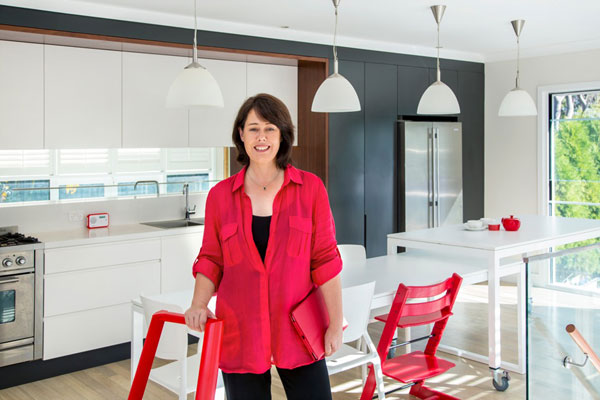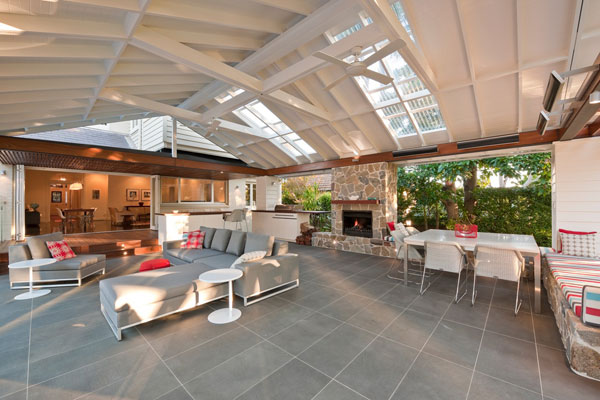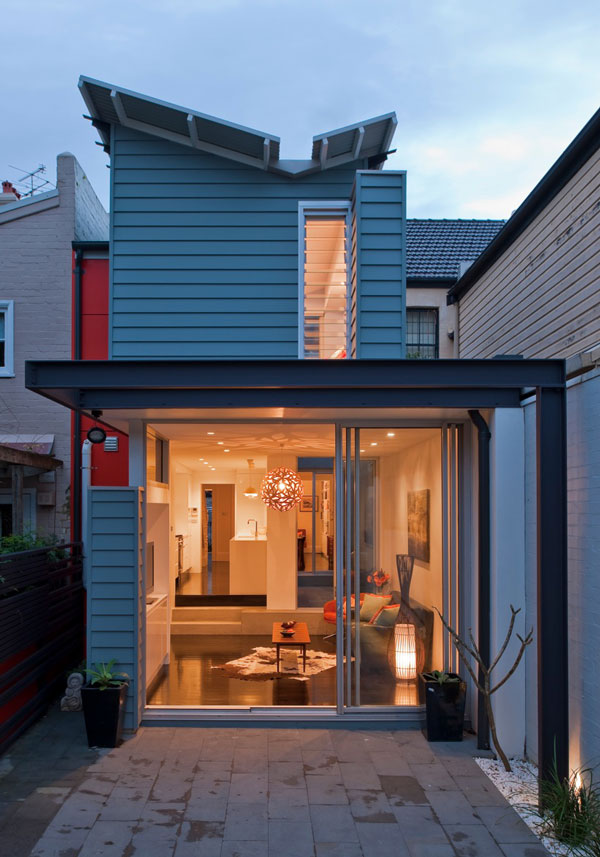After 20 years in the industry, and working across residential and commercial projects, architect Michelle Walker, of Michelle Walker Architects, has seen “the speed with which projects can be designed and documented” change drastically. She’s also aware that “technology does not replace knowledge, experience and judgement”.

September 22nd, 2014
Full name: Michelle Walker
Role/title: Director & Principal Architect
• How did you come to be an architect? What first drew you to the practice?
I wanted to be an architect since my early teens and had a drawing board in my bedroom from age 14 years.
I spend many of my formative years living in Europe (London, Edinburgh and Malta) and then finished school in San Fransciso. Living in these older cities definitely influenced my awareness of the built environment and built spaces.
I also had the good fortune to be exposed to some great electives at high school that gave me a taste of things I found I loved – technical drawing, materials technology (woodwork, metal works & plastices), art and design, art history. I also had some wonderful teachers along the way, which fostered my interest and lead me to this path.
I started studying Art History at The University of California and then returned to The University of Sydney to study architecture.

• Did the reality of practicing architecture differ from your expectations? In what ways?
Yes, the realist of practicing architecture differs from my expectation, as it does from most people’s notions of what architects do.
As an architect, my focus and reason for being is design and the built form. I want to design well and create beautiful places.
The reality of residential work is that our practical role is as an agent of significant change.
Most of our efforts are not in designing or producing drawings, its co-ordinating a team of people, our clients included, through a process to bring about that change.
There has to be a vision and then on our part, there has to be enthusiasm, tenacity and hard work to keep a project progressing on track.
• Have you developed a personal style or philosophy in your work? How would you describe this?
This is evolving over time, and yes, when I look back over projects, I do see some similar strategies which are consistently used. Mainly to do with how to add contemporary work to an existing older home, often with a clearly marked link between the old and the new. The new work is a contemporary response to how families live now, and a contemporary response to the site and climate.
• Having worked across residential projects, planning & urban design, property development and interior architecture, what do you believe the main forces and challenges for the practice of architecture are/will be?
For residential work, a worthy business challenge is how to deliver a good quality design service which is not cost prohibitive and reliant on projects with a budget of several millions. Larger budget projects are the ultimate for most architects, giving scope for wonderful work.
There is less attention and status given to smaller, more modest residential projects. They also have a value in providing an accessible service and the benefits of good design to more people and homes. The challenge is providing these services in a profitable way, without every job becoming a “love job”.

• Do you think the profession of architecture has changed since you entered it? If so how? Is this good or bad?
What has changed over the past 20 years since I graduated from university is the speed with which projects can be designed and documented. CAD, 3D capabilities and our instant communication via emails, texts and the internet, has completely changed the pace of how work is produced. These changes are remarkable and mind blowing, for someone who learnt their craft on the drawing board.
Having said that, technology does not replace knowledge, experience and judgement, which develop over time. Technology remains the tool.
• What are your plans for the future?
To continue to grow the size of my practice, to continue to design well and create beautiful homes. And to create a range of homewares and outdoor living accessories to make living in these spaces just that bit more joyful and easy.
Michelle Walker Architects
mwarchitects.net.au
A searchable and comprehensive guide for specifying leading products and their suppliers
Keep up to date with the latest and greatest from our industry BFF's!

Savage Design’s approach to understanding the relationship between design concepts and user experience, particularly with metalwork, transcends traditional boundaries, blending timeless craftsmanship with digital innovation to create enduring elegance in objects, furnishings, and door furniture.

Create a configuration to suit your needs with this curved collection.

The Sub-Zero Wolf showrooms in Sydney and Melbourne provide a creative experience unlike any other. Now showcasing all-new product ranges, the showrooms present a unique perspective on the future of kitchens, homes and lifestyles.

Channelling the enchanting ambience of the Caffè Greco in Rome, Budapest’s historic Gerbeaud, and Grossi Florentino in Melbourne, Ross Didier’s new collection evokes the designer’s affinity for café experience, while delivering refined seating for contemporary hospitality interiors.

With Milan 2024 only a few weeks away, we sneak a view of some of the most exciting pieces set to go on show – from lighting design to furniture, here are nine preview products.

Extrapolating the typology of farmhouse architecture, Cameron Anderson Architects (CAARCH) has drawn on the local architecture of Mudgee in both form and materiality to deliver a surprising suite of buildings.
The internet never sleeps! Here's the stuff you might have missed

Art, design, architecture and hospitality all combine perfectly at The Ritz-Carlton, Melbourne by BAR Studio and Cottee Parker.

Leading the field in terms of ergonomics, this high-end office furniture from Buro is also designed with the evolving needs of the modern workplace in mind.

Wood Marsh, a practice that spans 40 years, has been the first to design many of Melbourne’s landmark infrastructure projects – including the monumental noise walls along the Eastern Freeway (the first non-building to receive the Victorian Architecture Medal), Eastlink, the Geelong bypass and the pedestrian bridge at the west end of Bourke Street. The […]

Welcome to the year of the Design Effect. This year’s theme aims to showcase the profound ripple effects that exceptional design can have on people, place and planet. Join in shaping this narrative by contributing your perspective before May 3, 2024, and become a part of the Design Effect movement.